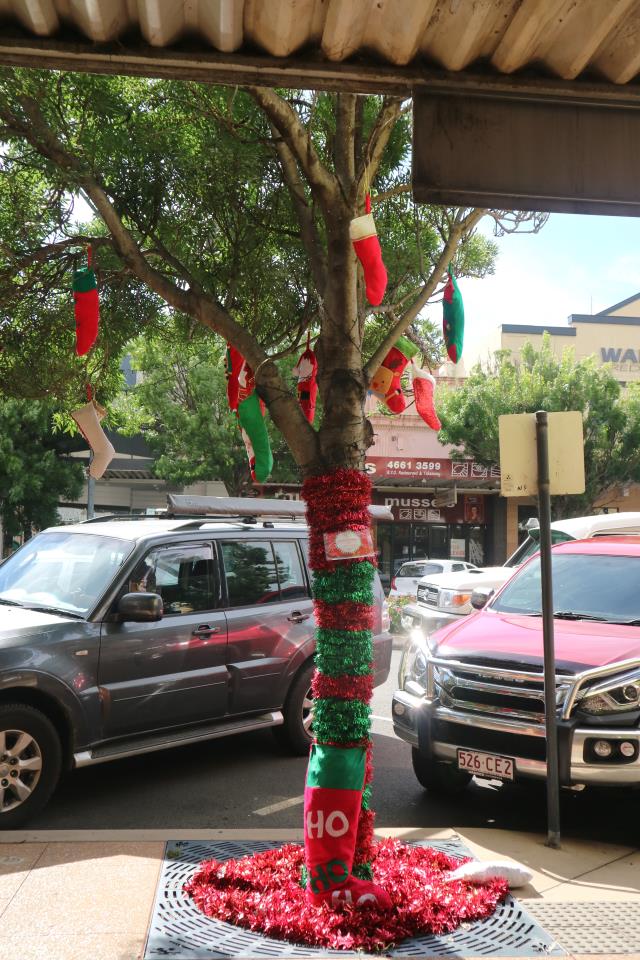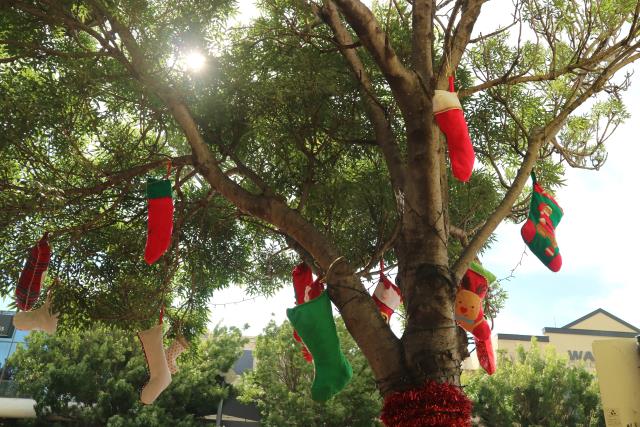By Beatrice Hawkins
It’s almost that time of year! All the trees are decorated down the main street and looking very festive. Windows are decorated and Christmas lights are appearing in house yards all over town.
I have my small tree up and decorated. These days it is only a table decoration.
I really intended to buy an Albany Woolly Bush and have it in a pot ready to decorate but life has got in the way and it hasn’t happened.
I have seen them growing in the bush in WA and my daughter also had them flourishing in the house yard. I think they make a fantastic alternative to the traditional pine Christmas tree. They have the “pine” appearance but are soft to the touch and are a really beautiful Australian native.
They will tolerate light frost, do well in a large pot, don’t require to much water, like full sun but will tolerate some shade and have lovely red flowers in spring and summer. I really should visit the local nurseries and find one for the northern end of my west facing verandah, I could enjoy it all year and have it ready to decorate for Christmas 2022… something else to add to the “to do” list for this week.
Each state has it’s own version of “Christmas bush” and as much as I love the Albany woolly bush it is not the one that WA claims as their Christmas representative. WA Christmas bush is in fact a spectacular golden flowered parasitic tree that I have seen growing to about 20 feet tall. It is a variety of mistletoe but instead of being in a tree it is a tree! Apparently it has an extensive root system that have been known to travel 110 metres through the ground to attach to another plant to steal their sap! It is believed to be the largest parasite in the world and is certainly the largest form of mistletoe. It provides an incredibly beautiful display at this time of the year.
South Australia’s Christmas bush is known as Sweet Bursaria or native box and grows from 2-4 metres depending on conditions, is tolerant of most soil types and will grow quite well in arid areas. It has lovely sprays of fragrant creamy white flowers at this time of year.
Tasmania also claims this beauty as their Christmas bush and it actually grows in every state except WA. It is a tough wiry tree growing over most of Tasmania with its lovely starry white flowers being attractive to birds, butterflies and bees. Apparently the honey produced has a rather wonderful, distinctive flavour.
Victoria’s representative is the largest member of the mint bush family and has the lovely minty smelling foliage of these native plants with the decorative white flowers smelling sweetly of mint also. It flowers at this time of the year around Melbourne and especially in the Dandenong Ranges.
NSW has the lovely Christmas Bush of my childhood, that appears beautifully red at this time of year after the relatively insignificant white flowers have finished. The sepals gradually become brilliant red and the tree almost glows in the bush.
Here in Queensland we don’t appear to claim any tree for Christmas but we do have a most beautiful native white orchid that is commonly known as the “Christmas orchid”. I guess we do like to be a bit different here in the north of the country!
As it grows profusely and originated in, the rain forests from Cairns to Cape Tribulation, it is not something I’ve actually seen. From pictures, however, it looks truly beautiful with long sprays of white flowers at this time of the year.
It now grows, given the right conditions, from southern NSW right up to northern Queensland.
It likes the damp sheltered floors of the forests and so is believed to be pollinated by moths as it is not in areas conducive to bees and butterflies.
Even though we will probably be sweltering in the heat in most parts of Australia for Christmas, we still seem to follow the traditions ingrained from our mainly northern hemisphere ancestors and use fresh or artificial versions of assorted pines to decorate. I admit that even the Albany woolly bush is my preferred option because it looks like and can be shaped to resemble a typical Christmas tree. I have over the years though, used branches of eucalypt as a uniquely Australian alternative.
One of the best alternatives was a large branch of a banksia one very memorable year with the WA grandchildren. Looking at Christmas lights that year in the small country town, through the eyes of a small boy who had just turned three, is something I will never forget and a memory to be forever treasured and revisited… Oh the wonder of it all!!








